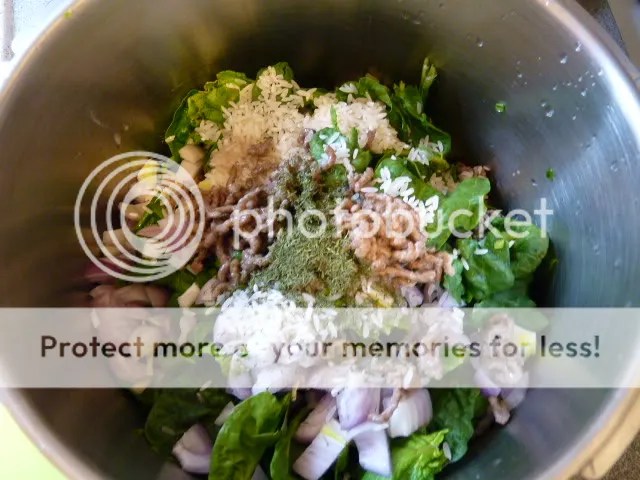
No, that wasn’t a typo! We’re talking about lazania, not lasagne! The island of Milos is one of my favorite Greek islands. I’ve only visited twice, once in 2003 by myself, and once in 2011 with S and my mother. Although it took me seven years to return, I never stopped yearning for Milos. Before we start cooking, let’s visit just a few spots on the island to get us in the mood.
And who knows… maybe it will inspire you to visit Milos some day!

The village of Klima, located at sea level below the town of Trypiti, is a row of bay-front two-story buildings. The ground floor is a ship-shed and the upper level is living quarters. A ship-shed is exactly what it sounds like: a garage for a fishing boat. Although Klima is the most famous ship-shed village, there are dozens of villages like this here in the region of the Southwest Cyclades islands.

Across the bay on the northern coast of the island is the lagoon of St. Nicholas. It’s an important wetland (one of several on Milos), and the two white buildings you see are little churches. A road goes along here and ends at the village of Emporeio, one of the most peaceful spots on the island. However, to get this photo, you have to be high up in the area of Xerokampos.

Xerokampos is one of my favorite parts of the island. Very sparsely populated, it’s green and filled with wildflowers in spring (as is the whole island, of course) with a panoramic view.



The cliffs of Sarakiniko, where we went swimming in April. The rocks are so white and smooth that it is often called a lunar landscape. We were completely alone for our swim and long, leisurely picnic.

The dramatic sea-cut channels at Papafranga. I went swimming here in 2003, when I was in Milos in July, but when we came back last April the rock-cut steps down to the beach were off limits.
So… are you hungry yet?
I came up with this recipe in an effort to replicate a dish I ate once, about a year ago. I don’t know how accurate it is, but it was delicious and I will definitely make it again. One of the famous traditional foods of Milos is the pasta ‘lazania,’ which is basically pappardelle. I can’t buy Melian lazania up here on the mainland (they sell it at restaurants and at traditional shops in Milos though!), but they do sell pappardelle. However, the pappardelle cost exactly twice what the lasagne cost.

So I buy lasagne and cut it myself. If you can’t get pappardelle or if your supermarket does the same crazy thing, do what I do! I promise, the results are excellent. (Use the flat lasagne, rather than the ruffle-edged kind.)


The original restaurant version only used spinach, but I liked it much better with arugula also, so definitely use both. The peppery taste of the arugula balances the spinach very nicely.
First, boil the lasagne noodles. I put olive oil in the pasta water because I think it helps keep the noodles from sticking to each other, which is important. The worst thing is to have your lasagne noodles come out in a single clump. I also stir them around pretty much the whole time to reduce the likelihood of sticking.
Meanwhile, clean the spinach: twist the leaves off the roots and drop in a large pot of cold water with 1/4 cup red wine vinegar in it. This will help loosen the dirt on the leaves. Agitate forcefully with your hands. When you feel that the leaves are clean, lift them out in handfuls to a colander. Don’t pour them out, because the dirt, which has settled on the bottom of the pot, will just come out onto the leaves again.
Don’t chop the spinach, but chop the arugula. You don’t have to discard the stems. No reason to throw anything away!


Saute the garlic in a nonstick pan; then add the spinach and arugula. Salt.


Drain the lasagne. If you used pappardelle, ignore this step. Carefully lay out a lasagne noodle on your cutting board and cut into three equal strips. Transfer to a plate and continue with the other noodles. Be very careful not to get a steam burn.


When the noodles are ready, add the lemon zest to the spinach and arugula, and then the noodles with the olive oil, which will keep them from sticking here too. Stir in the yogurt and the myzithra (or parmesan).
Season with freshly ground pepper and serve.

Creamy Melian Lazania with Greens
Serves 2 (generously)
240g pappardelle or lasagne noodles
1 colander full fresh spinach, washed
1/2 bunch arugula (rocket), ends removed, chopped in 2″ pieces
2 tsp lemon zest
1/4 cup plain Greek yogurt
4 tbsp olive oil, divided
2 tbsp grated myzithra cheese (or parmesan)
salt & pepper
1. Boil pappardelle or lasagne noodles in water with 2 tbsp olive oil.
2. Saute garlic in non-stick pan; add greens and allow to wilt; salt.
3. Drain pasta. If using lasagne, cut each noodle into three equal strips.
4. Stir lemon zest into greens. Add pasta to pan with remaining olive oil. Stir in yogurt and cheese.
5. Serve with freshly ground pepper.
Nutritional Information
per serving, i.e., half the recipe, omitting any salt added at the table
621 calories
18g fat (3g saturated, 15g unsaturated)
95g carbohydrate
21g protein
5g dietary fiber
5mg cholesterol (2% DV)
165mg sodium (7% DV)
646mg potassium (18% DV)
Contains a significant amount (+10% DV) of the following:
vitamin A, calcium, thiamin, niacin, vitamin B-6, phosphorus, selenium, magnesium, zinc, vitamin C, iron, riboflavin, folic acid, food folate, manganese, and copper.
You might also like:
Spicy Siphnian revithada
Orange-scented chorizo pasta with dried figs
Creamy lemon pasta


























































